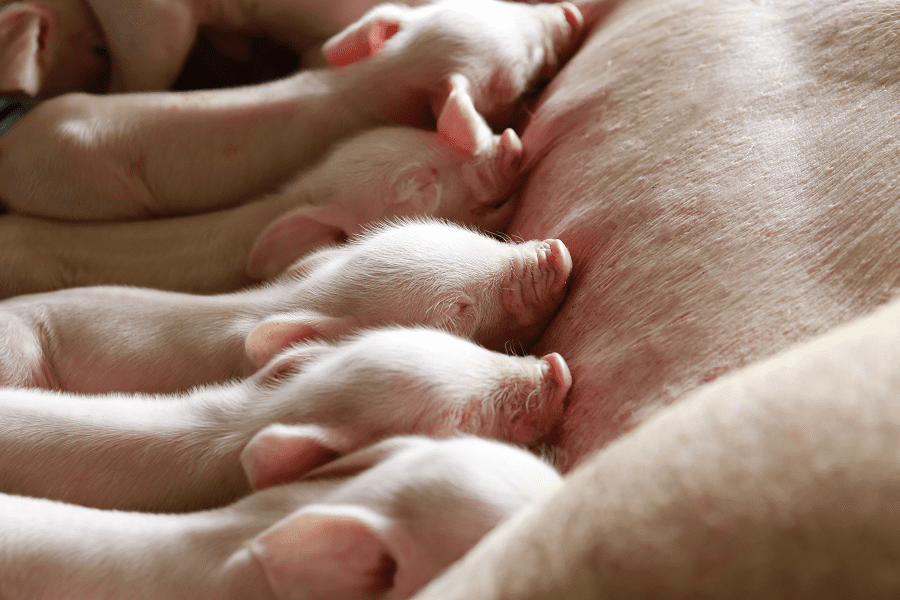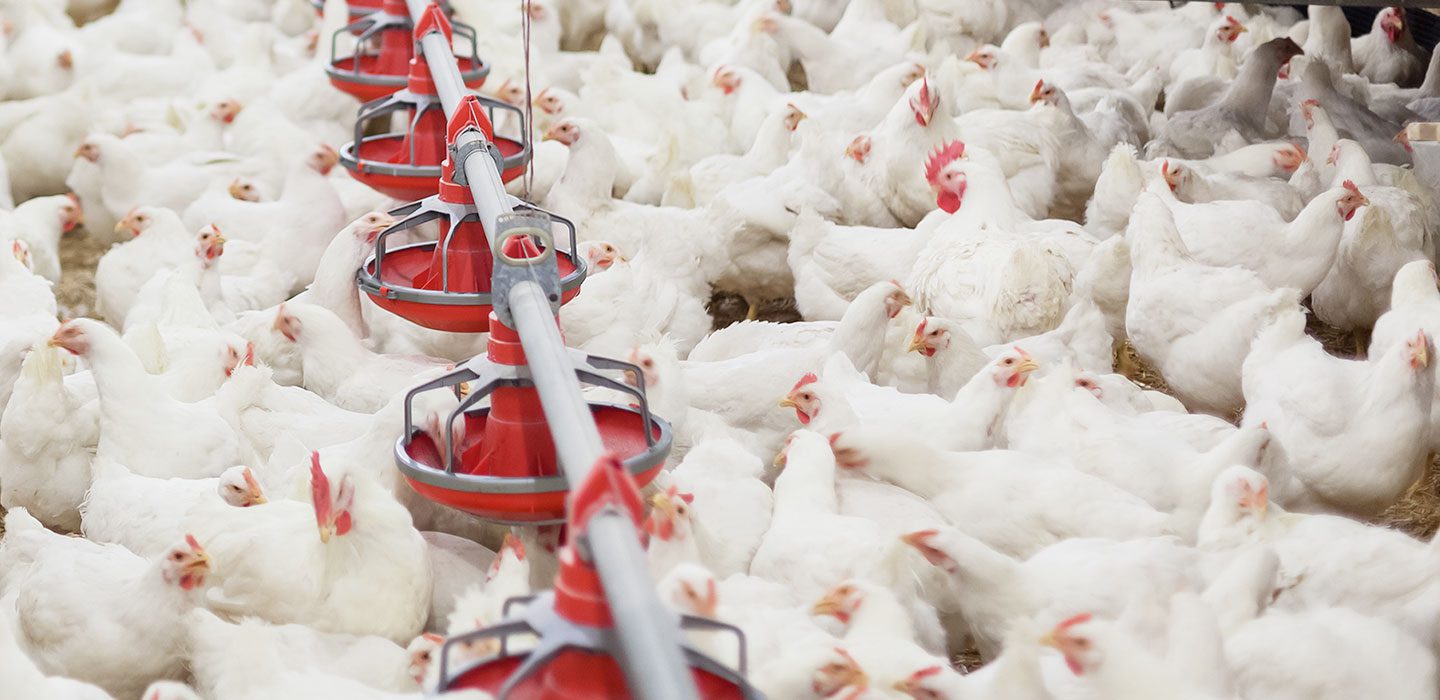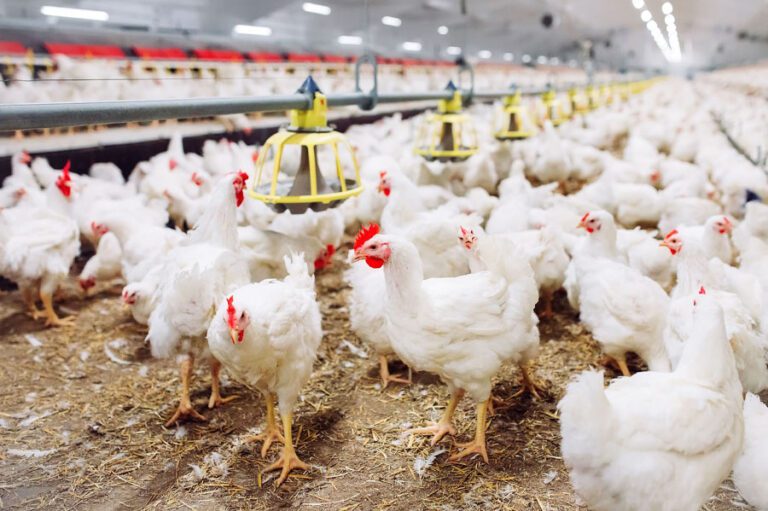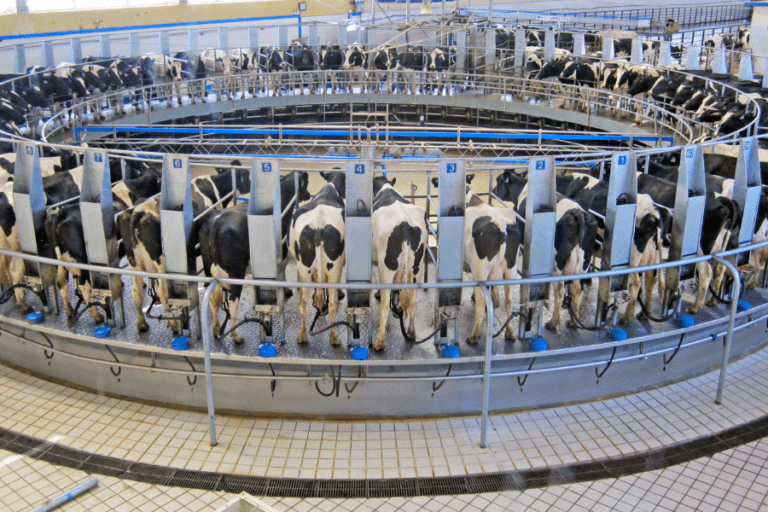Focus on Sow Lifetime Productivity & Health in Response to New Sow Housing Regulations

In recent years, the swine industry has seen novel legislation passed to regulate sow housing. California’s Proposition 12 and Massachusetts’ Question 3 both instituted space increases for gestating and lactating sows. In response to these laws, pork industry economists have predicted a large decrease in sow inventory, mainly due to the cost of renovating existing infrastructure to meet compliance. Some estimates forecast a reduction in sow numbers to 5.4 to 5.5 million in the United States, a noticeable decrease from our current 6.1 million sow inventory. However, the demand for pork, both domestically and internationally, is still on the rise. This will require a significant increase in pigs produced per inventoried sow. In other words, the industry will need to produce more pounds of pork from fewer sows.
So, what can be done to support pork producers who are asked to do more with less? Nutrition and biosecurity steps provide some viable options to optimize sow lifetime productivity and health.
Prioritizing Reproductive Potential
One area for producers to focus on that supports meeting pork demand is to have more of their sows reach parity three or beyond. Economic calculations from Gruhot et al. in 2017 indicate that a sow maximizes her net return on investment and the return per pig weaned in parity five. And it takes at least two parities to break even on each sow entering the herd.
Nutrition can help sows get closer to meeting these goals. Research shows sows supplemented with MINTREX® Bis-Chelated Trace Minerals (zinc, copper and manganese) have an increase of 6.5 to 10% more sows reaching parity three versus sows supplemented with inorganic sources of those same trace minerals1. Studies and field trials also show MINTREX® Trace Minerals have a positive impact on structural integrity locomotion versus inorganic trace minerals2, both of which support a sow remaining in the herd for longer.
Improving Piglet Livability
The other area of impact to optimize pigs produced per sow is focusing on the number of pigs weaned per sow farrowed. Here again, nutrition can make a difference. Studies show an increase of 0.3 to 0.6 more pigs weaned per litter in sows fed MINTREX® Trace Minerals3 with both an increase in piglets born alive and a decrease in pre-wean mortality in these evaluations (with over 200,000 farrowing events recorded). On average, sows supplemented with MINTREX® Trace Minerals saw 0.3 more pigs born alive per litter and a decrease in pre-wean mortality of 1.1%. That leads to 0.4 more pigs weaned per litter on average. At 2.4 litters per sow per year, that’s approximately one more pig weaned per sow per year versus sows supplemented with inorganic trace minerals.
Overall Pig Health
Finally, we cannot forget biosecurity when it comes to optimizing sow farm efficiency. Disease challenges cost our industry millions of dollars each year. Holtkamp et al. in 2013 calculated porcine reproductive and respiratory syndrome virus (PRRSv) infection costs the U.S. swine industry more than $600 million per year.
Producers need to return to basics when considering biosecurity – focus on keeping what’s inside the farm inside, and what’s outside the farm out. That means removing the risk factors for disease introduction.
Remind farm employees of the importance of biosecurity protocols and adhere to proper lines of demarcation. And consider extra precautions for disease risk reduction, including air filtration and in-feed viral risk reduction. Recent publications have demonstrated the potential of PRRSv and porcine epidemic diarrhea virus (PEDv) transmission through feed to naïve farms/farms that are susceptible to virus and disease introduction4. ACTIVATE® DA Nutritional Feed Acid is a blend of organic acids and methionine source HMTBa that supports gut health by helping balance intestinal flora and aiding in digestion by altering the intracellular pH of bacteria itself. In trials, this product has been shown to reduce the risk of contamination in feed and the risk of introduction of PRRSv and PEDv into animals.
When it comes to changes in sow housing regulations, focusing on increasing pigs produced per sow while optimizing sow livability is key. Nutritional interventions can play a role in improving both sow productivity and enhancing biosecurity practices on the farm.
- Zhao 2012, Barea 2019, Lawrence 2021
- Zhao 2012
- Zhao 2012, Barea 2019, Lawrence 2021, Hintz 2023
- Dee 2020, Dee 2023

Nutrição Inteligente para o seu negócio
Mais ciência. Mais conhecimento. Mais inspiração. Mais maneiras de você alimentar o mundo.




